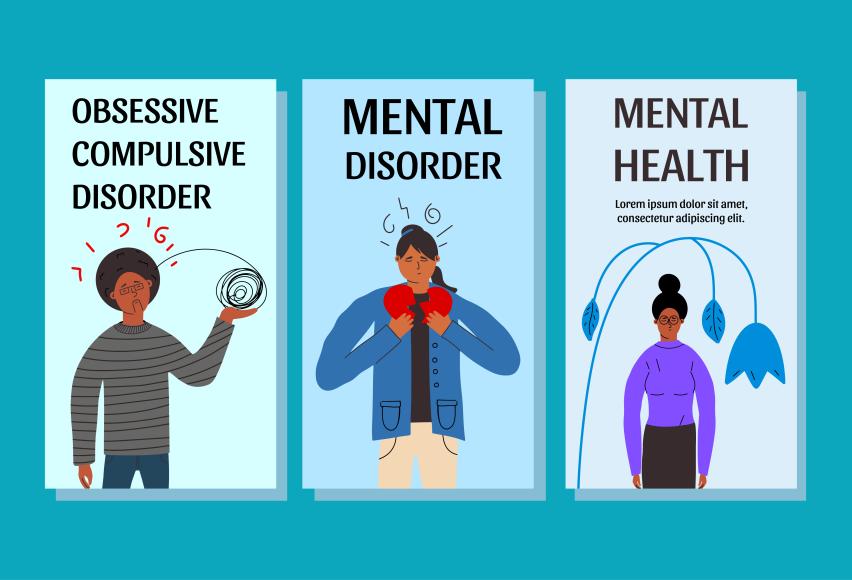
Online test
Find out the severity of your symptoms with this free online test
Obsessive-compulsive disorder (OCD)is characterized by obsessive thoughts and repetitive behaviors (compulsions) that are distressing and difficult to manage. These symptoms can have serious effects on a person’s daily life and psychosocial functioning. The effects of OCD are far-reaching and can impact a person’s family life, work-life, and relationships as well as the person’s mental health. Not only is living with OCD distressing, people with OCD are also likely to have comorbid mental health issues such as depression or anxiety. Finding treatment hasn’t always been easy.
OCD was long considered untreatable and attempts to manage it using standard psychiatric interventions were not very helpful. People with OCD didn’t respond well to traditional psychodynamic therapy. Medication was largely ineffective. Behavioral interventions such as systematic desensitization or aversion therapy didn’t bring much relief. But one intervention seemed to be different.
If you’ve searched for treatment for OCD, you’ve probably come across a reference to ERP. ERP, Exposure and Response Prevention, has shown to be highly effective in reducing symptom severity for many people living with OCD, and is now considered a first-line treatment. What makes ERP different? How does it work? Why does it work?
What Is ERP?
Unlike some other behavioral interventions, ERP specifically approaches OCD from a fear-avoidance perspective. Mowrer's two-factor theory of fear and avoidance holds that people experience anticipatory anxiety when exposed to environmental stimuli that they associate with fear or pain. Avoidance of the painful or feared stimulus reduces anxiety. It also reinforces the avoidance behavior, creating a cycle of fear and avoidance.
This pattern is similar for people with OCD. Obsessions are triggered by some stimulus in their world. They respond with compulsive behaviors in an effort to avoid or alleviate the anxiety associated with those stimuli. While these avoidance behaviors might alleviate the anxiety, they reinforce the fear and strengthen the obsessive and compulsive behaviors. It becomes a never-ending cycle.
How does ERP work?
Just why people develop OCD is unclear. Some research suggests that there are differences in how people with OCD interpret and manage stimuli. It’s hard to block out obsessive thoughts and they have difficulty with safety signaling or being able to differentiate between a safe and a threatening stimulus. How these come together in OCD isn’t well-understood, but it is thought that they are tied to our “fight or flight” response that is kind of like the brain’s early warning system. ERP is thought to mediate that response for people with OCD.
When ERP is used to treat OCD, the goal is to break the cycle of fear and avoidance and improve distress tolerance. By eliminating the behavior rituals and avoidance behaviors, people can learn how to tolerate distressing feelings without resorting to counterproductive behaviors. They learn how to challenge their existing fears, distortions in thinking, and responses. In short, instead of avoiding anxiety-provoking situations (exposure), people learn to not respond (response prevention) to the trigger.
If ERP sounds similar to Cognitive Behavioral Therapy (CBT), you’re right, it is. In fact, CBT is actually not a single therapy but an approach that combines cognitive therapies (CT) and behavioral therapies (BT). There are many ways in which CT and BT are combined to address mental health issues, all falling under the CBT umbrella. ERP is a highly specialized form of CBT that is particularly effective in treating OCD.
ERP has been widely studied and found to be superior to other forms of therapies for treating OCD for many people. Studies have found ERP to be more effective in treating OCD than approaches, including CBT (without ERP) and cognitive therapy. ERP is sometimes combined with other therapeutic interventions such as cognitive or “talk therapy” and medication, and those outcomes tend to be positive as well.
ERP has also been used successfully across treatment settings and populations, including children and adolescents, making it a useful and generalizable option for many people. ERP has even been found to improve sleep and overall quality of life.
As with any treatment modality, ERP may not be effective for everyone. Some of the factors that may affect treatment can include:
- lack of adherence to treatment
- poor insight
- comorbid depression
- OCD severity
These factors don’t exclude someone from being treated with ERP. It means that you and your mental healthcare provider need to work together to incorporate the treatments that are the best fit for you.
The Takeaway
ERP is not new to the treatment stage but has become the first-line intervention for people living with OCD. Its effectiveness and its usefulness across settings and populations make it a good choice for treating OCD. It has been shown to help many people living with OCD and offers hope for lasting symptom relief.
References
1. Sharma, E., Sharma, L. P., Balachander, S., Lin, B., Manohar, H., Khanna, P., … Stewart, S. E. (2021). Comorbidities in obsessive-compulsive disorder across the lifespan: A systematic review and meta-analysis. Frontiers in Psychiatry, 12. doi:10.3389/fpsyt.2021.703701
2. Hezel, D. M., & Simpson, H. B. (2019). Exposure and response prevention for obsessive-compulsive disorder: A review and new directions. Indian journal of psychiatry, 61(Suppl 1), S85–S92. https://www.ncbi.nlm.nih.gov/pmc/articles/PMC6343408/
3. Mowrer, O. H. (1939). A stimulus-response analysis of anxiety and its role as a reinforcing agent. Psychological Review, 46(6), 553-565. doi:10.1037/h0054288
4. Law C, Boisseau CL. Exposure and Response Prevention in the Treatment of Obsessive-Compulsive Disorder: Current Perspectives. Psychol Res Behav Manag. 2019;12:1167-1174
https://doi.org/10.2147/PRBM.S211117
5. Olatunji, B. O., Cisler, J. M., & Deacon, B. J. (2010). Efficacy of cognitive behavioral therapy for anxiety disorders: a review of meta-analytic findings. The Psychiatric clinics of North America, 33(3), 557–577. https://doi.org/10.1016/j.psc.2010.04.002
6. Storch, E. A., Mariaskin, A., & Murphy, T. K. (2009). Psychotherapy for obsessive-compulsive disorder. Current psychiatry reports, 11(4), 296–301. https://doi.org/10.1007/s11920-009-0043-8
7. Diefenbach, G. J., Abramowitz, J. S., Norberg, M. M., & Tolin, D. F. (2007). Changes in quality of life following cognitive-behavioral therapy for obsessive-compulsive disorder. Behaviour research and therapy, 45(12), 3060–3068. https://doi.org/10.1016/j.brat.2007.04.014
8. Gillihan, S. J., Williams, M. T., Malcoun, E., Yadin, E., & Foa, E. B. (2012). Common Pitfalls in Exposure and Response Prevention (EX/RP) for OCD. Journal of obsessive-compulsive and related disorders, 1(4), 251–257. https://doi.org/10.1016/j.jocrd.2012.05.002
Online test
Find out the severity of your symptoms with this free online test
Start your journey with StopOCD
Take control of your life and find freedom from OCD through professional therapy and evidence-based cognitive behavioral techniques.
Start Now



